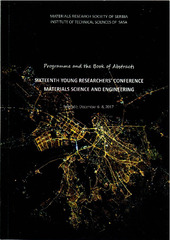Приказ основних података о документу
Winemaking by-products as a source of phenolic compounds
| dc.creator | Smailagić, Anita | |
| dc.creator | Pantelić, Milica | |
| dc.creator | Dabic Zagorac, Dragana | |
| dc.creator | Natić, Maja | |
| dc.date.accessioned | 2023-12-08T13:23:15Z | |
| dc.date.available | 2023-12-08T13:23:15Z | |
| dc.date.issued | 2017 | |
| dc.identifier.isbn | 9788680321332 | |
| dc.identifier.uri | http://cherry.chem.bg.ac.rs/handle/123456789/6373 | |
| dc.description.abstract | Recovering bioactive compounds from agricultural waste is attracting an increasing attention in the past years. The wine industry produces a large portion of waste that represents an ecological and economical issue as grape pomace (seeds and skins), stems and lees are residues left behind after pressing and fermentation in the production process. These winemaking by-products are rich in various phytochemicals, especially polyphenols, and therefore could be used as an inexpensive and sustainable source in biotechnological applications (nutraceutical, medical, pharmaceutical, and cosmetic industry). The objective of this work was to characterize red grape pomace and to establish its phenolic profile. The content of total polyphenols (TPC) and anthocyanins (TAC), along with the radical scavenging activity were investigated, and the influence of three different extraction solvents (acidified MeOH/H2O, acidified EtOH/H2O and 0.1M HCI) was assessed. Quantification of phenolics in grape pomace extracts was done using the available standards by UHPLC coupled with a diode array detector (DAD) and connected to a triple-quadruple mass spectrometer. The concentration of total phenolics was determined using Folin- Ciocalteu method, scavenging activity of pomace extracts was evaluated using DPPH· reagent, while the content of anthocyanins was determined using pH-differential method. The results obtained for TPC, RSA and TAC varied due to different solvents used for the extraction (2.1-6.5 mg GAE/100 g DW, 12.2-34.5 µmol TE/100 g DW, and 406.9-695.3 mg mal 3-glu/100 g, respectively). Among polyphenols the most abundant was catechin (34.4 mg/100 g DW). Also, high concentrations of gallic acid, ellagic acid, and syringic acid were found (7.8 mg/100 g DW, 2.3 mg/100 g DW, and 2.1mg/100 g DW, respectively). Our investigations indicated that analysed extracts were rich in polyphenols and therefore could be considered in food supplements production. | sr |
| dc.language.iso | en | sr |
| dc.publisher | Belgrade : Institute of Technical Sciences of SASA | sr |
| dc.rights | openAccess | sr |
| dc.rights.uri | https://creativecommons.org/licenses/by/4.0/ | |
| dc.source | Sixteenth Young Researchers’ Conference Materials Science and Engineering, December 6-8, 2017, Belgrade, Serbia | sr |
| dc.title | Winemaking by-products as a source of phenolic compounds | sr |
| dc.type | conferenceObject | sr |
| dc.rights.license | BY | sr |
| dc.citation.spage | 22 | |
| dc.citation.epage | 22 | |
| dc.type.version | publishedVersion | sr |
| dc.identifier.fulltext | http://cherry.chem.bg.ac.rs/bitstream/id/34549/Scan.pdf | |
| dc.identifier.rcub | https://hdl.handle.net/21.15107/rcub_cherry_6373 |


